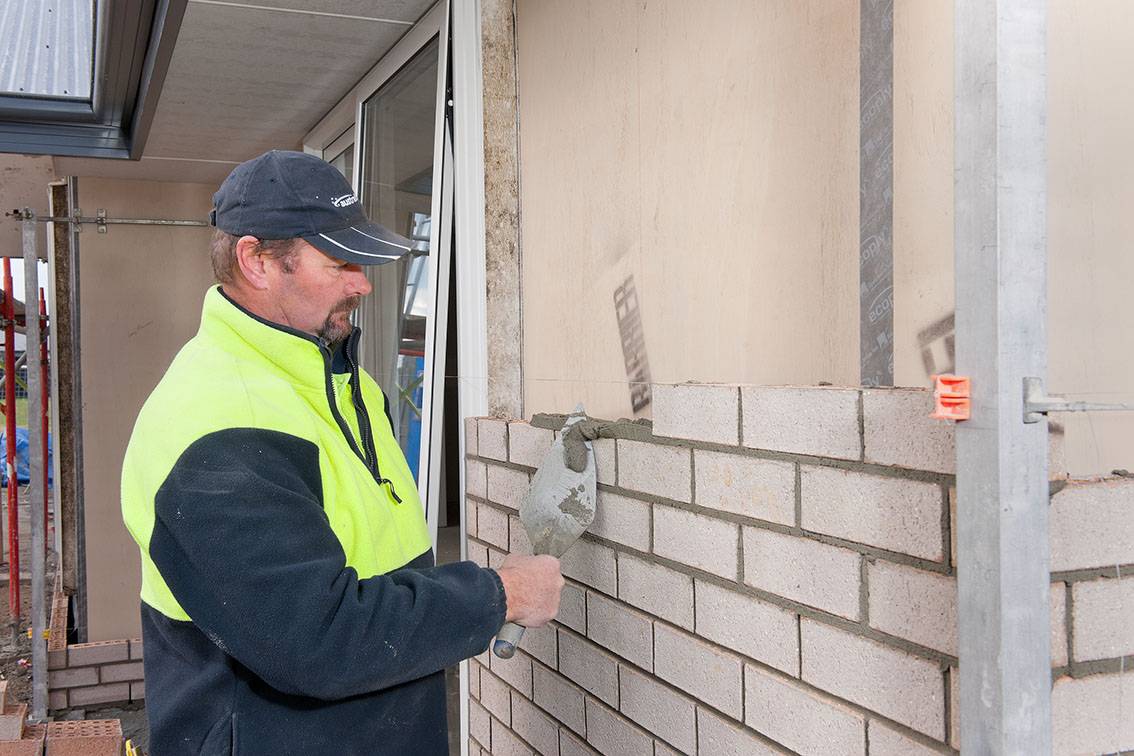An Unbiased View of Bricklayer Auckland
Wiki Article
A Biased View of Bricklayer Auckland
Table of ContentsUnknown Facts About Bricklayer AucklandThe Only Guide for Bricklayer Auckland3 Easy Facts About Bricklayer Auckland ExplainedThe Of Bricklayer Auckland
The difference in between absolutely no as well as traditional masonry remains in the laying of the block. The block is no longer pressed up and down, yet tilted. No has a special opening on the top side of the block. Therefore the mortar bed is reduced. It will sink also much deeper when the following program of blocks is laid.Furthermore, we also paid focus to an excellent proportion between the length as well as size of the block so that it is best for collaborating with a cot bond. In this manner the job continues swiftly. Advantage, For a specialist this means of working is barely a challenge. He can collaborate with the material/equipment that is acquainted to him.
Bricklayers are an essential occupation in the building and construction market, in charge of laying blocks, pre-cut rock as well as concrete blocks in mortar. Bricklayers construct, extend and repair residential and commercial buildings, as well as other frameworks such as structures, walls, smokeshafts or ornamental masonry. Obtaining to completion of a task and also having the ability to claim 'I built that' provides an actual feeling of success for brickies.
Your time as a bricklaying apprentice will usually be split in between your company as well as training supplier (such as a college), with at the very least 20% of your typical working hrs invested in training. Your training might occur each week, each month or in a different block of time, and it can happen at your area of job, at your training copyright or online.
Bricklayer Auckland Things To Know Before You Buy
When researching building and construction, you inevitably uncover that any new or cutting-edge suggestion has actually been tried over as well as over again, usually extending back decades. One of these new-but-actually-old concepts is the suggestion of a mechanical bricklayer, a machine to automate the building of masonry wall surfaces. It's simple to see the appeal of this concept - masonry building appears nearly perfectly fit for automation.It does not look like it would require physically complicated movements - each brick obtains a layer of mortar applied, and also is simply laid in area following to the previous one. And also due to the fact that each brick and mortar joint is the same size, placement is nearly deterministic - each block coincides set range from the previous one.
These makers could not notice anything about their atmosphere, or procedure where a brick needed to go - they simply extruded a layer of mortar and mechanically positioned a block at normal periods (Bricklayer Auckland). It's uncertain the amount of of these devices ever made it past the drawing board, yet a minimum of one of these (John Knight's) was made use of to build a brick wall that apparently still stands today.
For many years, stonework has declined in value as a construction innovation in the developed globe, as well as with it the rate of interest in automating it. Unlike with concrete 3D printing, where there are lots of attempts to develop the modern technology, I can just discover a handful of current initiatives to automate masonry. Bricklayer Auckland.
8 Easy Facts About Bricklayer Auckland Described
It can putting blocks in limited hallways or complicated edges, and also Hadrian can construct all the walls of a tiny building useful reference with just a couple of relocations of the automobile. Hadrian can presently establish around 200 blocks a hr, however they're intending to be able to do 1000 obstructs an hour or more (the blocks it sets are different from the block stonework used in the US, however in United States masons can establish someplace in the neighborhood of 400 blocks a day).
SAM has a series of sensors to make up for the activity of the system and ensure it's putting blocks degree, and also can collaborate with bricks of all different sizes (though it won't develop CMU obstruct wall surfaces). It obtains installed to a movable scaffolding that's raised gradually as the wall is completed.
The promotional material on Building and construction Robotics' website suggests that it's no longer their primary emphasis redirected here - even more focus is given to their other product, MULE.Other than SAM and also Hadrian, there are a couple of various other mechanical bricklayers in numerous stages of growth. You additionally see the periodic scholastic effort. One area where we do see some industrial success with mechanical bricklaying is with block roads - a range of firms provide equipments that can "publish" a section of road made of bricks.
See This Report on Bricklayer Auckland
A somewhat different category of machines aimed at boosting stonework productivity is what I'll call "stonework aides". These are machines created to aid with physically raising the block (they appear to be more common with block than block) as well as taking the stress off the mason, while still enabling the mason to manipulate it right into setting, Stonework aides day from at the very least 1994, when the read armed forces explored with MAMA, the Mechatronically Assisted Mason's Help.
Report this wiki page